What is Celestia? The first modular blockchain in the crypto industry
We talk about an innovative project with sustainable tokenomics
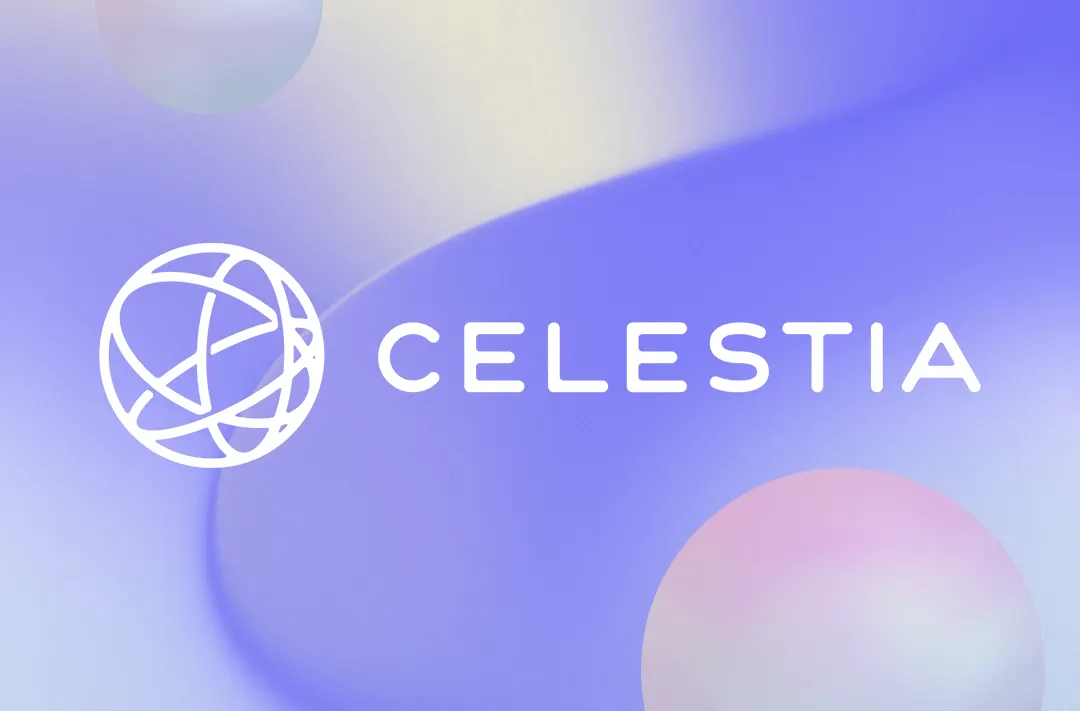
17.10.2024
321
11 min
0
The end of October 2023 marked one of the most important events in the crypto industry — the emergence of the modular blockchain concept. Celestia, the first modular blockchain platform, was launched in October 2023, generating a huge response. The Celestia blockchain allows developers to create their own decentralized networks within the broader platform, sharing layers of execution and consensus. In addition to the innovative concept of modularity, Celestia’s popularity was brought about by the airdrop of a native token, TIA, during the launch of the mainnet.
Content:
- What is a modular blockchain?
- What is Celestia?
- Ecosystem
- How does Celestia work?
- Tokenomics
- Where to buy and store TIA?
- Staking
- Roadmap
- Blockchain perspectives
What is a modular blockchain?
To better understand how the Celestia platform works, it is worth learning what a modular blockchain is.
Modular blockchain is an architectural approach to blockchain development that involves breaking down the various functions and components of a blockchain into independent modules. This allows for more flexible and adaptive solutions that can scale efficiently and integrate with other systems.
Distributed systems perform several key functions:
- Execution. All nodes validate transactions against a consensus algorithm. In account-based blockchains, nodes process transactions to compute a new network state.
- Consensus. Nodes “agree” on which transactions will be included in new blocks and in what order they will be processed.
- Settlement (dispute resolution). This feature ensures that validated transactions are irreversible and provides mechanisms for arbitration if their validity is disputed.
- Data availability. Each node contains a complete copy of the entire blockchain, storing every transaction. A node in a peer-to-peer network has the ability to request information from another node
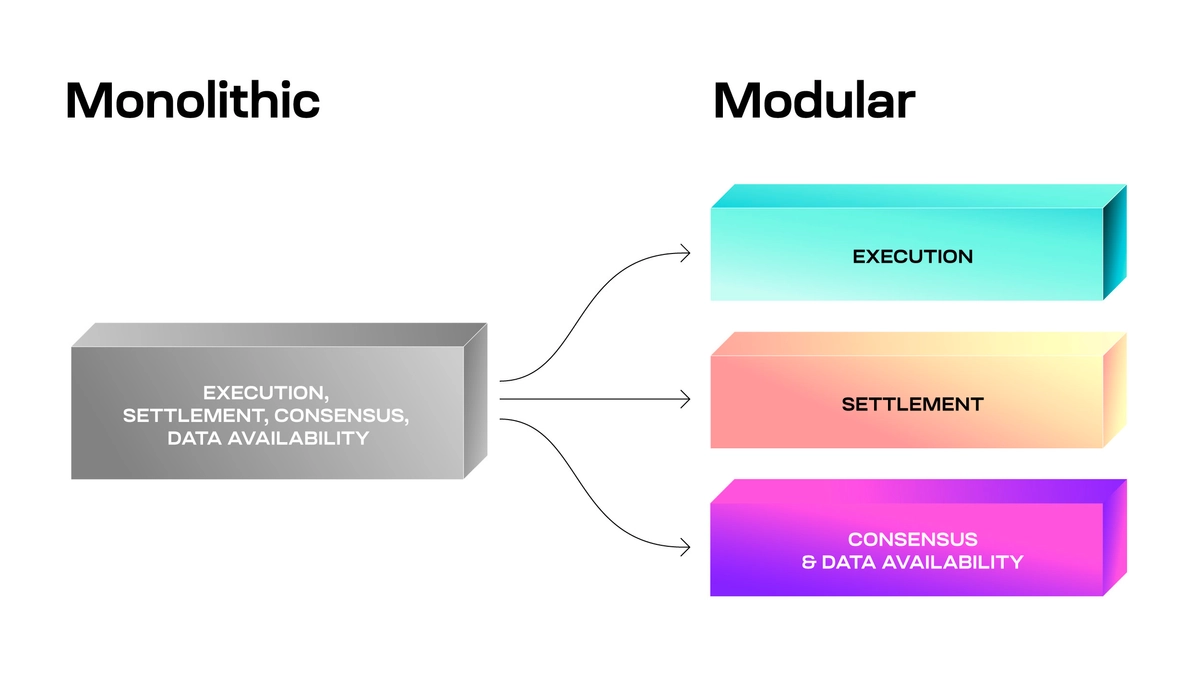
Scheme on the Celestia website
What is Celestia?
Celestia is a blockchain network that introduces a modular approach to blockchain design. Unlike traditional blockchains that combine consensus, data availability, and execution, Celestia separates these functions to offer a more scalable and flexible infrastructure.
Celestia is based on Mustafa Al-Bassam’s 2019 white paper LazyLedger. According to the Lazy Ledger concept, a registry refrains from computation or execution tasks and acts only as a data availability layer.
Subsequently, Al-Bassam decided to create a team to develop a crypto project based on his ideas and enlisted Ismail Khoffi, and John Adler as co-founders. Khoffi was the primary developer of the Cosmos ecosystem, while Adler worked with Optimistic Rollups technology to create scalable Layer 2 (L2) solutions. They renamed the project Celestia in 2021 and launched the mainnet on October 31, 2023.
Celestia allows developers to create custom runtime or “accumulation” environments, facilitating a variety of applications with customized management and scalability requirements. Traditional projects struggle for balance within the blockchain trilemma, according to which a project can only have two of three characteristics — decentralization, scalability, and security.
Celestia addresses these challenges by providing a baseline that focuses solely on consensus and data availability. This approach reduces the burden on developers to build secure and scalable networks from scratch and enables easier interoperability between different blockchains.
| Title | Celestia |
| Year of launch | October 2023 |
| Native token ticker | TIA |
| Explorer | https://celestia.explorers.guru |
| White Paper | https://www.allcryptowhitepapers.com/celestia-whit... |
| Developer website | https://celestia.org |
| Official social networks | |
| Where is it traded | On decentralized exchanges (DEXs) |
In October 2022, the project raised $55 million in a round led by Bain Capital Crypto and Polychain Capital. Participants include Galaxy, Delphi Digital, Placeholder, Blockchain Capital, Spartan Group, Jump Crypto, and several business angels. On September 23, 2024, Celestia Foundation announced it raised $100 million in a funding round with participation from Syncracy Capital, 1kx, Robot Ventures, Placeholder, and others.
Ecosystem
Celestia’s modular blockchain has attracted a large number of applications and platforms due to its flexibility and adaptability. Also, the TIA token plays an important role in creating new platforms and networks in the Celestia ecosystem. For example, developers can download and use TIA in decentralized applications rather than creating new tokens. The following systems are powered by Celestia:
- Caldera and Eclipse “Rollups-as-a-Service” blockchain platforms.
- Cross-chain solutions for asset transfers between Axelar, Polymer, and Hyperlane blockchains
- Keplr, Cosmostation, Leap crypto wallets
- Catalyst, Duality, and Crescent DeFi protocols
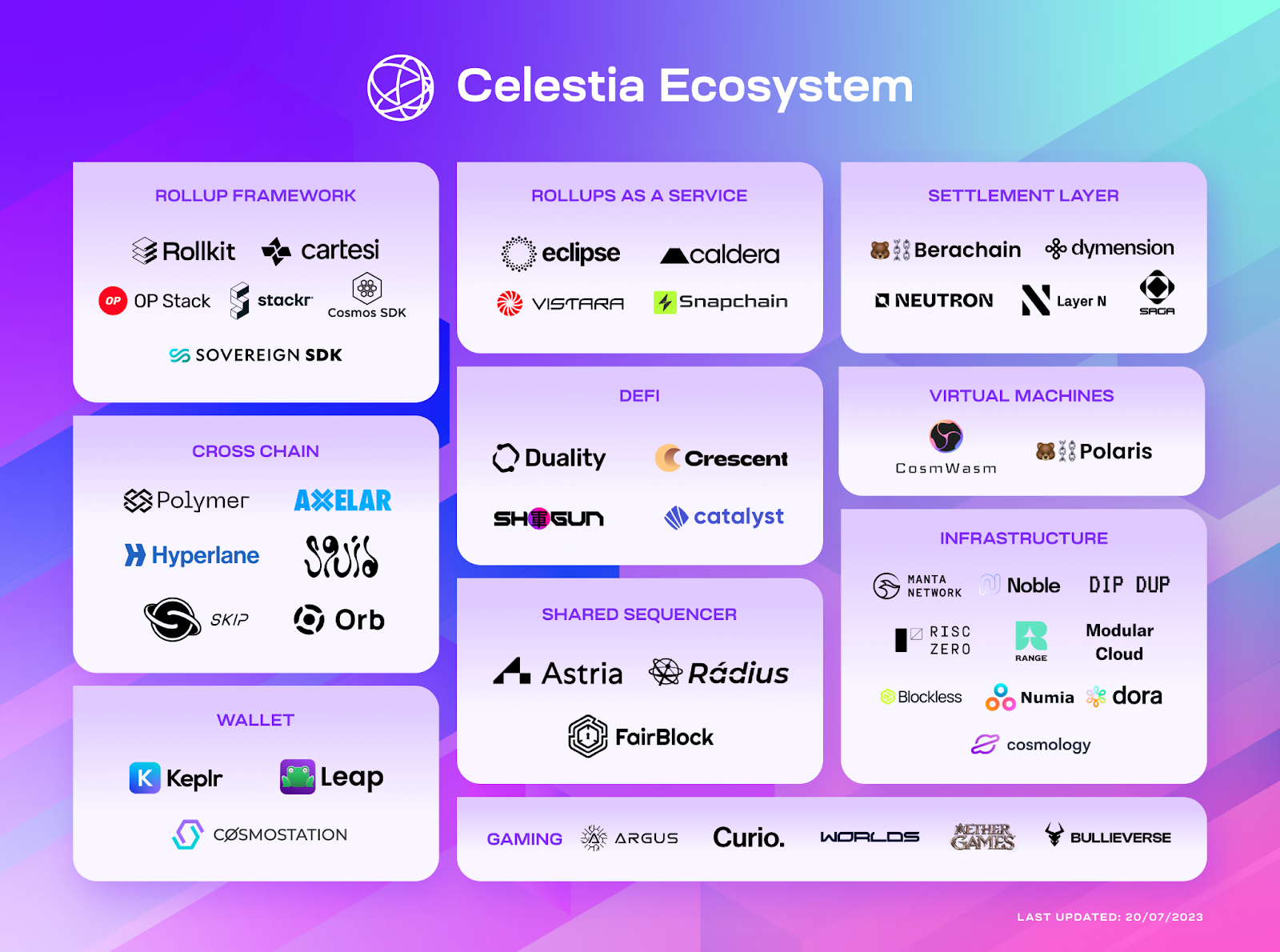
How does Celestia work?
At the basic consensus level, Celestia uses the Proof-of-Stake (PoS) method to sequence transactions. Initially, the block verification process is performed by 100 nodes. The platform also supports delegation of staking from one node to another.
The interconnected data availability layer distributes and stores valid data across the network. The data availability layer contains two main functions: data availability sampling (DAS) and Namespaced Merkle trees (NMT).
Two types of nodes operate to protect the Celestia blockchain: data availability nodes and consensus or validator nodes. Data availability nodes are categorized into three types:
- Bridge nodes. Bridges the data availability and consensus layers.
- Full nodes. Store all the data on the network, but are not connected to the data availability layer and therefore do not participate in consensus.
- Light nodes. Provide verification of data availability.
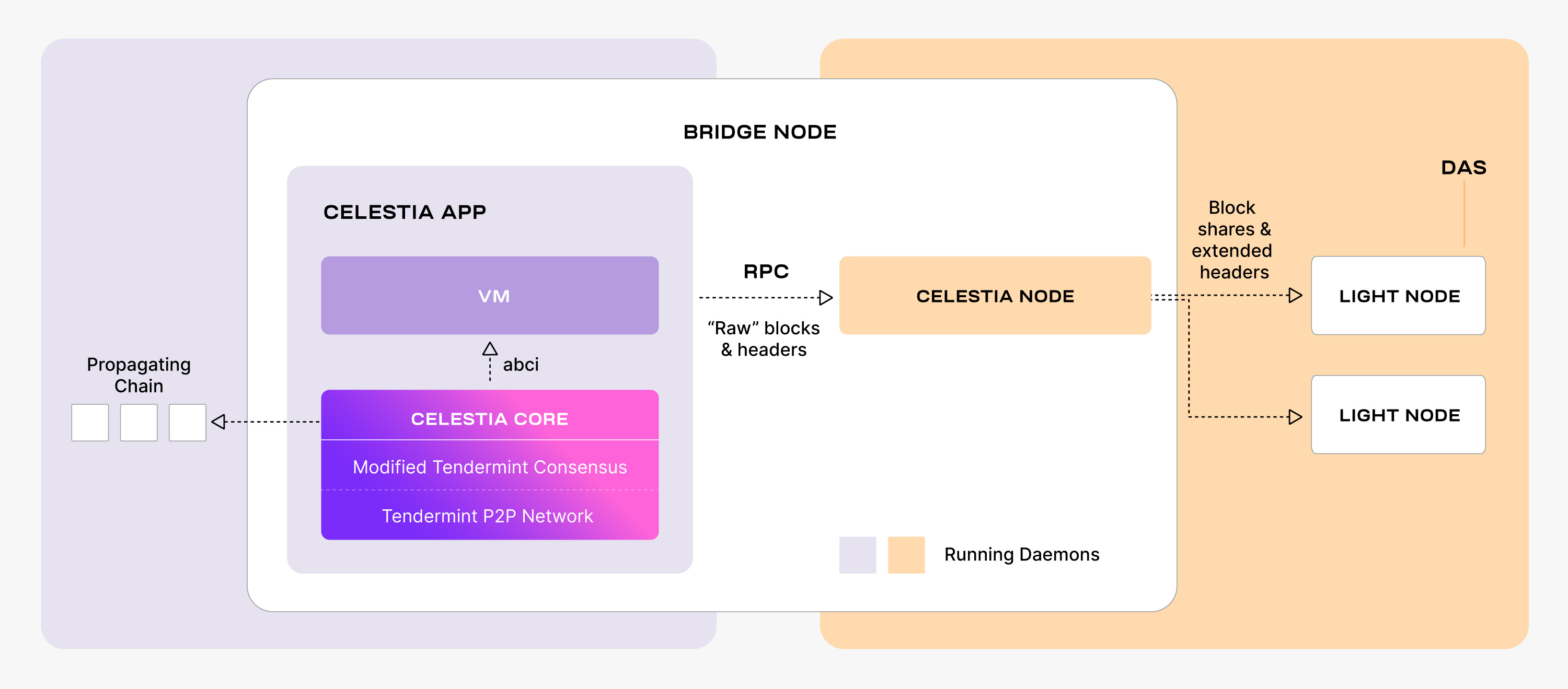
Scheme on the Celestia websiteTokenomics
TIA is Celestia blockchain’s own token. The asset is used in staking to provide network security and rewards, pay transaction fees, participate in project development votes, and incentivize data availability and verification.
The total supply is 1 000 000 000 TIA tokens, with 214 906 541 tokens currently in circulation.
20% of the total TIA offering is for the community: 7,4% drop and 12,6% for initiatives. Developers will receive 26,8% of the tokens, while early investors are allocated 19,7% and 15,9%. Employees of developer Celestia Labs received 17,6% of tokens.
TIA token inflation will be 8% in the first year and will gradually decrease by 10% per year until it reaches 1,5% per year. The asset ranks 74th in terms of capitalization, which is $1,069 billion, according to CoinGecko.
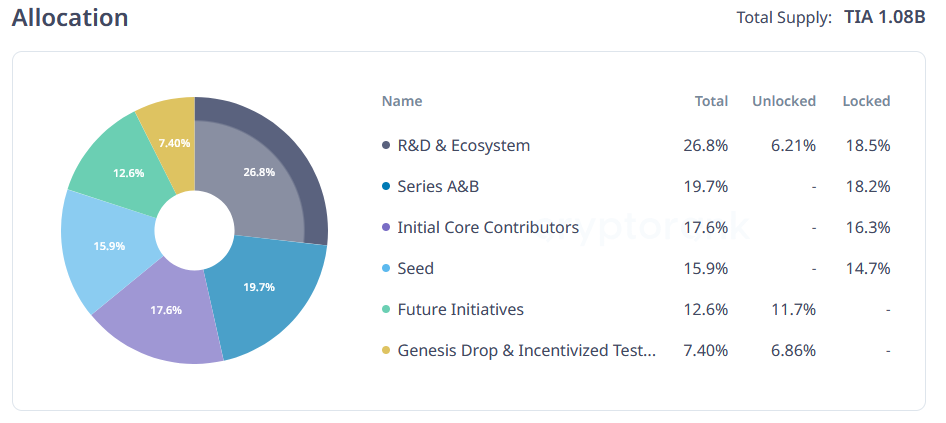
In November 2023, the project’s team organized an airdrop to celebrate the launch of the mainnet called Lemon Mint. A total of 138 981 addresses applied for TIA out of 191 391 eligible addresses. The total distribution amounted to about 44,4 million tokens: 74% of the intended 60 million TIA.
The economic structure of the TIA token is designed to ensure the long-term sustainability and growth of the Celestia network. Key aspects such as the overall offering, distribution methods, staking rewards, and management rights are carefully designed to align the interests of all participants.
The strategy ensures a balanced distribution between developers, validators, and the community, fostering an inclusive and decentralized ecosystem. Staking rewards and governance features encourage active participation and investment in network security and development. This creates a robust economic model that supports the vision of a modular, scalable blockchain infrastructure.
Where to buy TIA?
The token can be bought on decentralized exchanges either on the spot market or in the form of a perpetual contract. You can do this in a few steps:
- First, you need to register and confirm a new account or log in to an existing one. You can create an account using this link.
- Through the navigation menu, you should go to the cryptocurrency purchase page.
- Next, you need to fund your account with fiat currency or cryptocurrency.
- If you have not previously passed verification, the platform will request it at the next stage.
- After successfully completing the KYC (know your customer) procedure, it will be possible to buy TIA.
The purchased tokens can be stored in the following wallets: Trust Wallet, Trezor, SafePal, MetaMask, Ledger, Keplr, and Leap.
Staking
If you have TIA and you want to earn extra income, it is possible to stake tokens in the Keplr extension. In the following, we will explain how this can be done.
First, you will need to select validators on the staking page. It is generally recommended to choose validators outside of the top ten in voting potential to encourage decentralization. You should also pay attention to the fee: look for an average range of 5%.
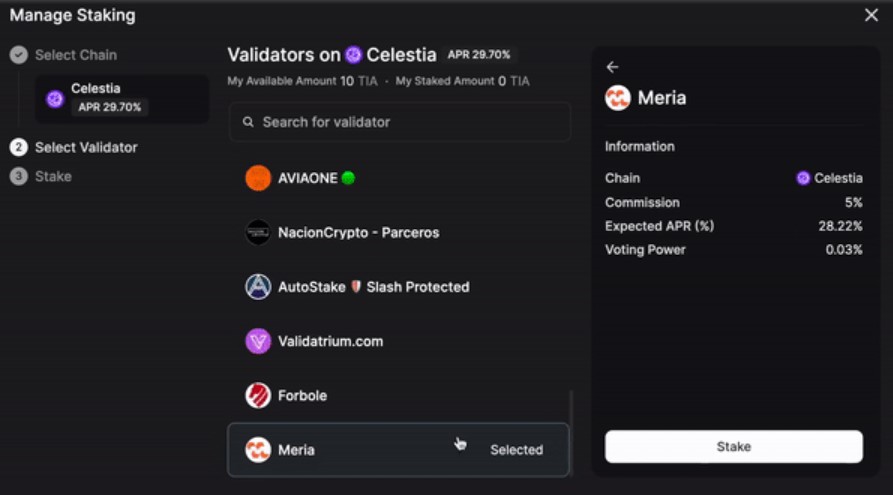
On the next screen, you need to enter the number of TIA tokens and select Stake. A Keplr pop-up window will appear asking you to approve the transaction. You should click Approve if you are ready to move on.
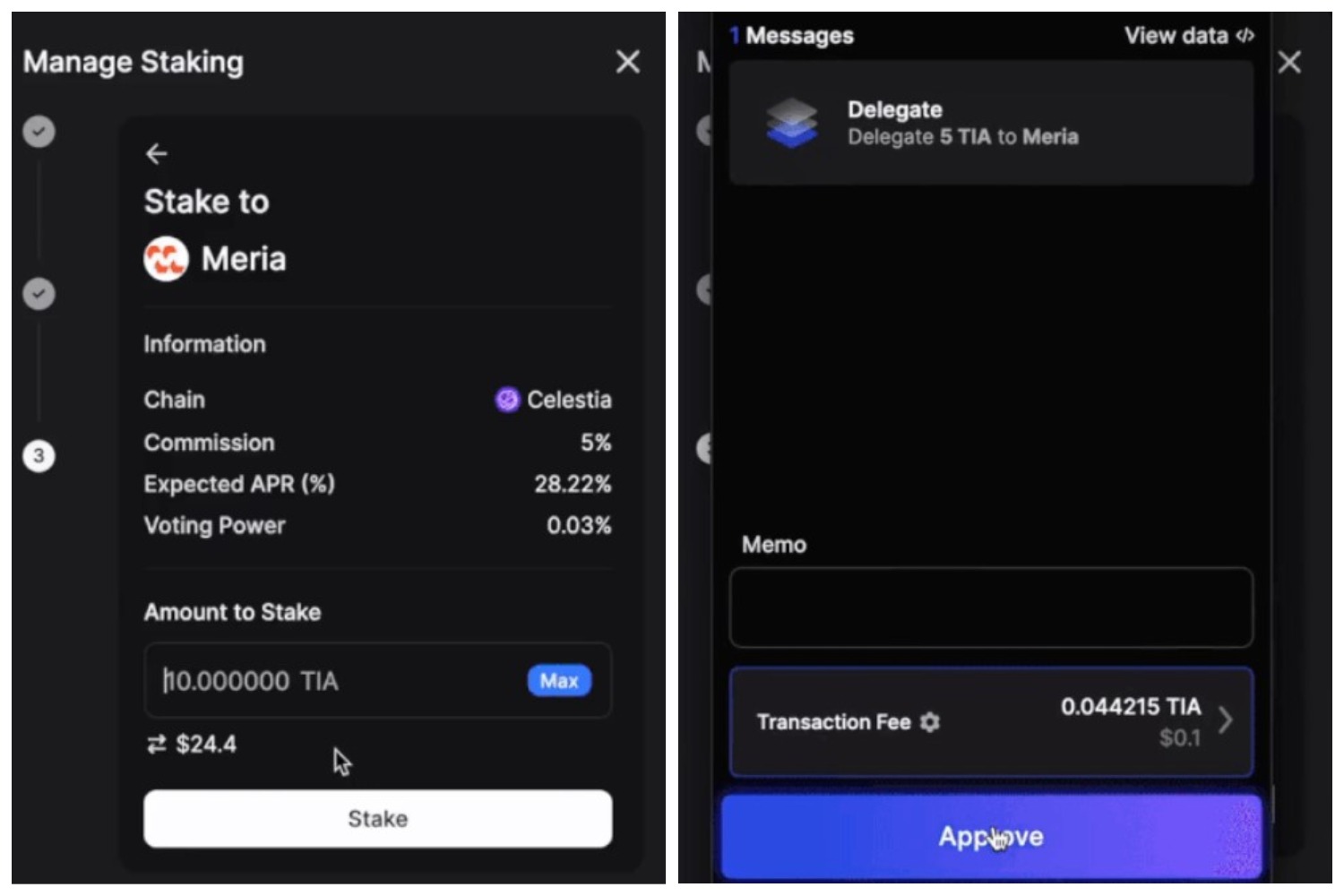
After confirming the transaction, you will see the following overview dashboard where you can get rewards, cancel staking, re-delegate or put additional tokens.
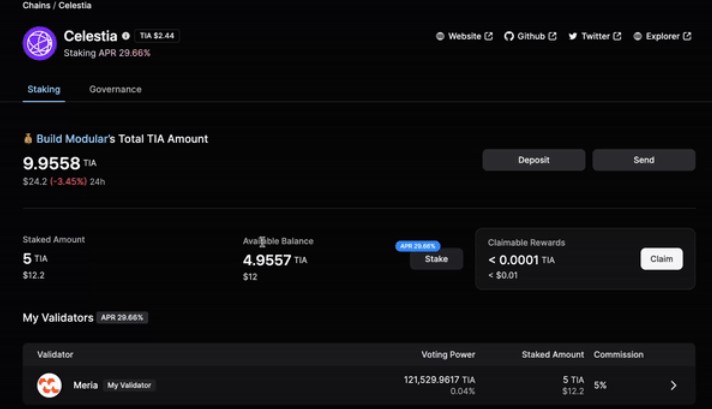
Roadmap
The Celestia team has stated its intention to increase block storage capacity to 1GB, so the roadmap is divided into three main areas of work:
The first area is related to the goal of reducing DA throughout by forming an ecosystem with increased block space availability. To store such large blocks, Celestia needs to optimize the consensus mechanism to maximize efficiency.
The second important point of the roadmap focuses on creating a verifiable empty space to which any user can contribute. With light nodes, users can self-certify the correctness of the block space protected by Celestia. This increases security and reduces reliance on third parties and centralized infrastructure, minimizing the need to trust external companies.
The final item on the Celestia roadmap focuses on removing barriers for rollup developers and users, which is divided into three subtasks related to streaming resource allocation, development, and data transfer.
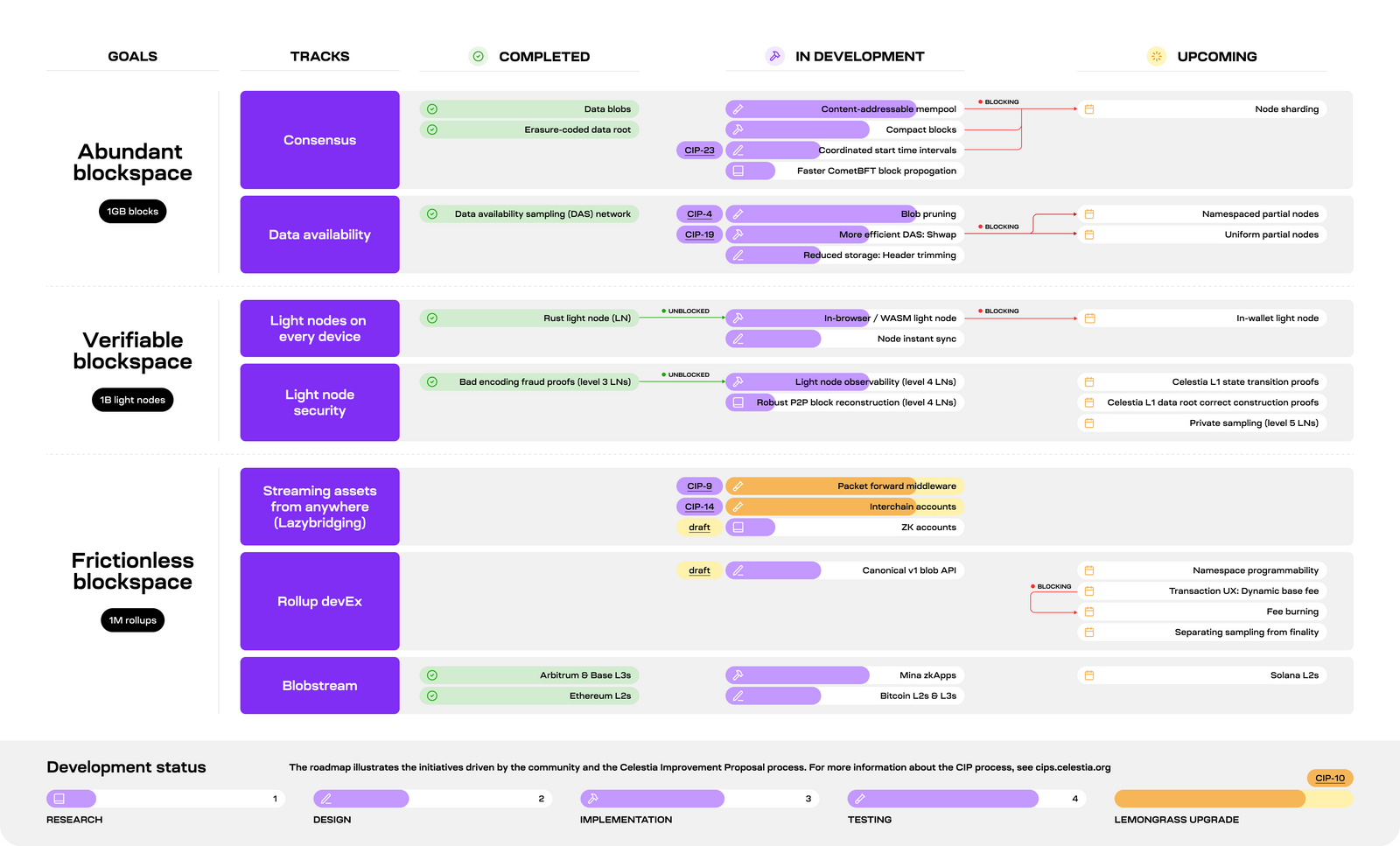
Blockchain perspectives
The Celestia project team has set a goal: to achieve enough throughout to support one million storage blocks and one billion light nodes. There are also plans to create the ability to run light nodes on smartphones.
Despite the competition, Celestia has already gained a significant place in the cryptocurrency market. Countless Rollups-as-a-service (RaaS) projects have already integrated Celestia into their ecosystems. The most prominent ones are AltLayer, Caldera, Vistara, Gateway, and Snapchain.
In April 2024, Celestia-powered liquid staking protocol MilkyWay raised $5 million in a seed round led by Polychain Capital. In June 2024, Celestia launched Blobstream, a tool on the Ethereum mainnet that allows developers to deploy L2 accumulation packets with Celestia as the data availability layer. The tool was previously launched on the L2-Ethereum networks Base and Arbitrum.
Useful material?
Basics
Why Satoshi Nakamoto’s technical manifesto for a decentralized money system matters
Oct 31, 2022
Basics
Experts evaluated the development prospects of the new ecosystem and the investment attractiveness of its token
Oct 20, 2022
Basics
How to track fluctuations correctly and create an effective income strategy
Sep 13, 2022
Basics
Review of the most profitable offers from proven trading platforms
Aug 29, 2022
Basics
The Ethereum Foundation team has published a breakdown of major misconceptions about the upcoming network upgrade
Aug 18, 2022
Basics
What benefits the exchange offers, and what else is in the near future
Aug 4, 2022









 Telegram
Telegram  Twitter
Twitter